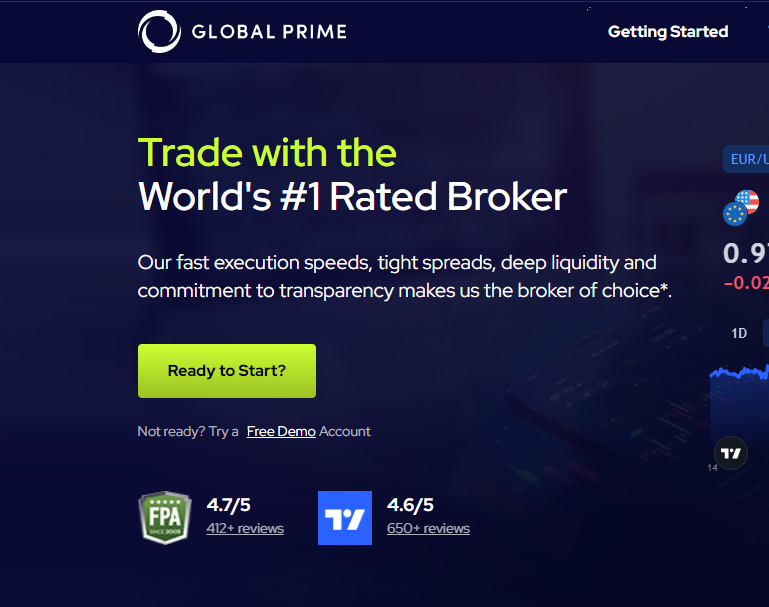Let’s discuss the best trading strategies, and the benefits and drawbacks of each…
Trading strategies are an essential tool for any trader looking to achieve their trading goals, whether it’s generating short-term profits or building long-term wealth. However, with so many different strategies available, it can be challenging to know which ones to use and when.
In this post, we’ll provide an overview of some of the most popular trading strategies, including their pros and cons, to help you decide which ones may be best suited to your individual needs and goals.
What Is a Trading Strategy?
A trading strategy is a set of rules or guidelines used by traders to make decisions about buying, selling, or holding assets. It is a systematic approach to trading that is based on a trader’s analysis of the market, including technical, fundamental, and/or quantitative factors.
Trading strategies can be used for any financial asset, including stocks, bonds, currencies, commodities, and derivatives. They can range from simple to complex and can be based on a variety of different approaches, such as trend following, momentum trading, value investing, or quantitative analysis.
The ultimate goal of a trading strategy is to maximize profits while managing risks.
How Do Trading Strategies Work?
Trading strategies work by providing traders with a set of rules or guidelines that they follow when making trading decisions. These rules are usually based on a trader’s analysis of the market, including technical, fundamental, and/or quantitative factors.
The key components of a trading strategy may include:
1. Entry and Exit Criteria
The specific conditions under which a trader will enter and exit a trade.
2. Risk management
The amount of risk a trader is willing to take on each trade, as well as how to manage risk during a trade.
3. Position Sizing
How much capital a trader will allocate to each trade.
4. Time Frame
The duration for which a trader will hold a position.
5. Market Conditions
The market conditions that must be present for a trade to be executed.
6. Trading Style
The trading approach a trader will take, such as trend following, momentum trading, or value investing.
Once a trader has developed and implemented a trading strategy, they will use it to make decisions about buying, selling, or holding assets based on the specific conditions outlined in their strategy.
This will help such a trader to be more disciplined and consistent in their approach to trading, as well as to manage risk and maximize profits.
Must You Have a Trading Strategy?
Are you asking if it’s possible to trade randomly without any strategy?
Yes, it’s possible. It’s a free world and you’re free to make all your trading decisions. However, in your own best interests, you should adopt a trading strategy or create one.
Having a well-defined trading strategy can help traders to manage risk, increase consistency, become disciplined, allow for optimization, and increase confidence.
Don’t Skip: How to Become a Better Trader
How Many Trading Strategies Should You Have?
Using the same strategy for multiple markets or time frames may not be effective, as each market and time frame have their own unique characteristics and require specific strategies to be successful.
The number of trading strategies a trader should have depends on various factors, including their level of experience, trading goals, risk tolerance, and the markets they are trading.
For beginner and intermediate traders, it is recommended to start with one or two strategies and master them before expanding to other strategies. This allows them to focus on learning the strategies in-depth and understanding how they work in different market conditions.
1. News Trading Strategy
News trading strategy is a type of trading strategy that involves making trading decisions based on news events and announcements that may affect the price of an asset. This strategy typically involves analyzing the impact of news events on the market and making quick trading decisions in response to the news.
Pros of News Trading Strategy:
1. Potential for High Profits
News events can cause significant price movements, which can result in high profits if the trader is able to make quick and accurate trading decisions.
2. Large Number of Trading Opportunities
News events occur frequently, which can provide traders with a large number of trading opportunities.
3. Ability to Trade Multiple Markets
News events can impact multiple markets, allowing traders to diversify their trading activities and increase their chances of success.
Cons of News Trading Strategy
1. High Volatility and Risk
News events can result in high volatility and increased risk, making it difficult to predict market movements and potentially leading to significant losses.
2. Difficulty in Interpreting News
Interpreting news events and understanding their impact on the market can be challenging, requiring a high level of skill and experience.
3. Limited Time for Decision-making
News trading requires quick decision-making, as the market can move rapidly in response to news events. This can be challenging for some traders, particularly those who are new to the strategy.
2. End-of-day Trading Strategy
End-of-day trading strategy is a type of trading strategy that involves making trading decisions at the end of the trading day based on the daily price movements of an asset. This strategy typically involves analyzing the daily price chart and making decisions based on the daily candlestick patterns and price action.
Pros of End-of-day Trading Strategy
1. Reduced Time Commitment
End-of-day trading allows traders to make trading decisions without needing to monitor the market throughout the day, making it a good strategy for traders with limited time.
2. Reduced Stress
End-of-day trading reduces the stress of constantly monitoring the market and making rapid trading decisions.
3. Long-term Perspective
End-of-day trading focuses on the long-term trend of an asset, which can be beneficial for traders who want to avoid short-term volatility and focus on the big picture.
Cons of End-of-day Trading Strategy
1. Reduced Trading Opportunities
End-of-day trading may limit the number of trading opportunities available to traders, particularly for those who want to take advantage of short-term price movements.
2. Potentially Missed Opportunities
End-of-day trading may cause traders to miss out on important news events or other factors that could impact the price of an asset during the day.
3. Less Precise Entry and Exit Points
End-of-day trading may result in less precise entry and exit points, as traders are relying on daily price movements rather than intra-day price action.
3. Day Trading Strategy
Day trading involves buying and selling assets/securities within a single trading day. This means that traders won’t hold onto their positions overnight. Instead, they’ll conclude and close all their trades before the market closes. A day trader identifies and executes trades based on short-term price movements.
Pros of Day Trading Strategy
1. Flexibility to set your own schedule.
2. You can see all moves and notice swift market changes.
3. Unlike swing trading, day traders won’t trade overnight. This means you won’t be exposed to the risks that can occur when the market is closed.
4. Day trading requires very little capital to start.
5. High returns on their investments, although this comes with higher risk.
Cons of Day Trading Strategy
1. Very time-consuming.
2. Day traders may incur high fees from frequent trading, including commissions, bid-ask spreads, and platform fees.
3. While day trading may have high rewards, it also has a sharp potential for quick and large losses.
4. Emotional, psychological and medical stress.
5. The market is unpredictable during trading sessions. There’s no telling how much or less profit you can make in a day.
4. Swing Trading Strategy
A type of trading strategy that involves making trades based on the swings or fluctuations in the price of an asset over a period of several days to several weeks. This strategy involves analyzing the price charts and buying and selling assets based on the price movements and patterns observed.
Pros of Swing Trading Strategy
1. Reduced time commitment compared to day trading
2. Potential for higher returns than traditional investing
3. Lower risk than day trading
4. Flexibility to hold positions for several days to weeks
5. Can be used in both bull and bear markets
Cons of Swing Trading Strategy
1. Requires knowledge of technical analysis and market trends
2. Can be influenced by unpredictable market events
3. May require paying more attention to news and events outside of trading hours
4. Possibility of holding onto a losing position for too long
5. May not be as profitable as day trading for experienced traders
Suggested: Day Trading vs Swing Trading: Which Is Better?
5. Position Trading Strategy
Position trading strategy involves holding positions for an extended period of time, usually weeks or months. This strategy typically involves using fundamental analysis to identify assets that are undervalued or overvalued, and making trades based on that analysis.
Pros of Position Trading Strategy
1. Potential for Large Profits
Position trading can result in large profits if the trader is able to accurately identify undervalued or overvalued assets and hold positions for an extended period of time.
2. Fewer Trading Decisions
Position trading involves holding positions for a longer period of time, which means traders don’t have to make as many trading decisions as they would with other trading strategies.
3. Reduced Exposure to Market Noise
Position trading involves taking a longer-term perspective, which means traders are less likely to be influenced by short-term market fluctuations.
Cons of Position Trading Strategy
1. Requires Patience
Position trading requires a great deal of patience, as traders must be able to wait for the right opportunities to present themselves and avoid the temptation to make impulsive trades.
2. Requires Extensive Fundamental Analysis
Position trading involves using fundamental analysis to identify undervalued or overvalued assets, which can be time-consuming and require a high level of skill and experience.
3. Potentially Lower Trading Frequency
Position trading may limit the number of trading opportunities available to traders, particularly if the market is not conducive to the strategy.
6. Trend Trading Strategy
Trend trading strategy involves identifying the trend of an asset and making trades in the direction of that trend. This strategy typically involves analyzing the price charts and using technical analysis to identify current trends.
Pros of Trend Trading Strategy
1. Ability to Capture Large Price Moves
Trend trading can result in large profits if the trader is able to accurately identify the trend of an asset and ride that trend for an extended period of time.
2. Fewer Trading Decisions
Trend trading involves holding positions for a longer period of time, which means traders don’t have to make as many trading decisions as they would with other trading strategies.
3. Easy to Understand
Trend trading is a straightforward strategy that is easy to understand, making it accessible to traders of all skill levels.
Cons of Trend Trading Strategy
1. Limited Trading Opportunities
Trend trading may limit the number of trading opportunities available to traders, particularly if the market is not trending strongly.
2. Requires Patience
Trend trading requires a great deal of patience, as traders must be able to wait for the right opportunities to present themselves and avoid the temptation to make impulsive trades.
3. It Can Be Difficult to Identify Trends
Identifying trends can be difficult, and traders must be able to accurately identify the trend of an asset in order to be successful with this strategy.
7. Scalping Trading Strategy
Scalping trading strategy involves making multiple trades in a short period of time, usually within seconds or minutes. This strategy typically involves using technical analysis to identify short-term price movements and making quick trades to capture small profits.
Pros of Scalping Trading Strategy
1. Potential for Quick Profits
Scalping trading can result in quick profits if the trader is able to accurately identify short-term price movements and make quick trades.
2. High Trading Frequency
Scalping involves making a large number of trades in a short period of time, which means traders have more trading opportunities.
3. Reduced Exposure to Market Risk
Scalping involves holding positions for a very short period of time, which means traders are exposed to less market risk compared to other trading strategies.
Cons of Scalping Trading Strategy
1. High Transaction Costs
Scalping involves making a large number of trades, which can result in high transaction costs due to spreads and commissions.
2. High Risk
Scalping can be more risky than other trading strategies, as traders are holding positions for a very short period of time and are therefore exposed to more market risk.
3. Requires Skill and Experience
Scalping requires a high level of skill and experience, particularly when it comes to analyzing price charts and identifying short-term price movements.
What is the Best Trading Strategy?
There is no “one-size-fits-all” trading strategy that works for everyone, as different strategies may work better for different traders, depending on their risk tolerance, trading goals, and experience level.
The best trading strategy is one that aligns with your individual goals and personality, and is based on a solid understanding of the markets and risk management. Traders should carefully consider their strengths and weaknesses, and choose a strategy that they feel confident in executing.
The financial market is constantly changing and unpredictable, and market volatility can be a major challenge for even the most experienced traders and investors. In this post, you will learn how to trade and gain during market volatility.









Pingback: 5 Fastest Ways To Make Online In Nigeria 2024 - AllenVest.com